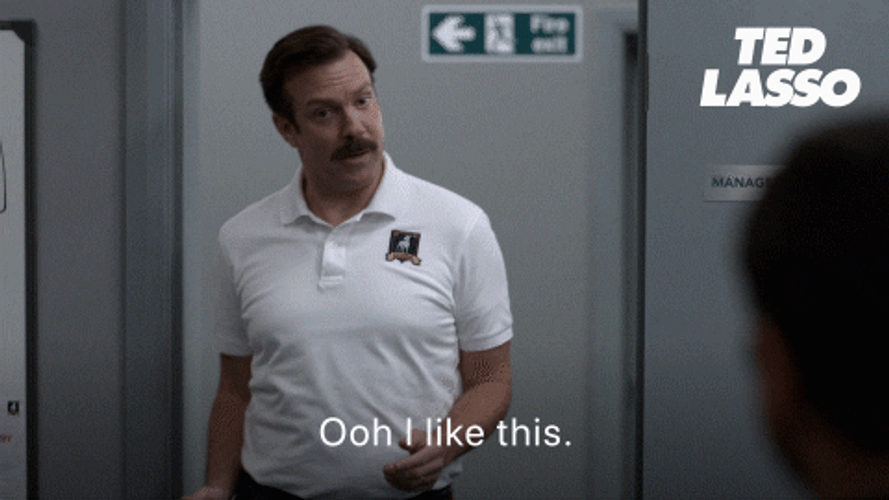🎨 Content Marketing, but with Strategy
What is successful content marketing, how can we use it to grow sustainably, and what are common stumbling blocks?
Hi 👋 I’m Florian Schleicher. This is the FutureStrategies newsletter of FUTURES. Thank you so much for reading along 💚 If you want to learn strategic marketing from me, then my Simple & Sustainable Marketing Academy is the perfect fit for you.
It has never been so easy to found your own company, a start-up, a brand. And it has never been so difficult to attract attention for it in the long term.
Whether it's a large international company or a start-up - everything nowadays revolves around sustainably successful content marketing with strategy.
1️⃣ Why do we need good content marketing?
The Internet has brought and continues to bring us an explosion of content.
In 2020, it was calculated that there are 64 zetabytes of data on the Internet. A zetabyte has 1 quintillion gigabytes. And according to estimates, in 2023, there will be 103 zetabytes.
Now if your head is also smoking from these big numbers, I'll try to make it a little more tangible: It is estimated that there are about 100 quintillion stars in the observable universe.
So much content means brands are finding it harder to stand out.
And at the same time, according to a Microsoft study, the average attention span of people continues to decline: In 2015, it was 8 seconds. In 2000, it was 12 seconds.
So in marketing, we have 8 seconds, or now in the mid-20s of the two-thousands, even less time to convince our target audience to engage with our content. Those of you who spend time on TikTok know that it's often not even a second that we give content to convince us.
So we need good content marketing to help us get people excited about our content and thus keep them loyal to our company.
2️⃣ What is Content Marketing?
The Content Marketing Institute defines the term as
“…a strategic marketing approach focused on creating and distributing valuable, relevant, and consistent content to attract and retain a clearly defined audience — and, ultimately, to drive profitable customer action.”
Content marketing is therefore a clearly defined process that addresses all these points. Ideally, this content that is created is authentic and fits us as a company, or as Tommy Walker from the content studio says:
“What you share is an extension of your identity.”
Almost all companies have already recognized this potential of content marketing. 46% of companies want to spend more on content and 79% of brands use content to generate leads.
But how can we create good content for sustainable growth?
3️⃣ Content for sustainable growth
The easiest way is to work directly with the definition above and I'll show you how to get through the individual components to the cornerstones of a successful content marketing strategy:
Content marketing is a strategic marketing approach - By strategy, I mean the path from A to B. So the first thing is to understand who we are - our company, our products and services - in which market we are moving - that is, who our target group is, what challenges they have and what other players there are in this market, our competitors and, for example, the legislation on this. Once we have analyzed the current state, the next step is to define goals. After all, we want to get from A to B. And there is the nice saying "Without a goal, you cannot score". So we need clear goals why we want to use marketing or even content marketing.
It's about creating AND distributing content - here we have a good insight into the two directions we have: We can create content, i.e. photos, images, videos, text, etc. And then we need to distribute that content. This happens through different channels like PR, social media, influencer marketing, etc.
Content should be valuable, relevant and consistent. In order for the content we create and distribute to have these characteristics, we need to understand who we are doing content marketing for. So we need to know our target audience, the people we want to reach. I like to work with needs models to understand what problems and challenges people have in their everyday lives and then define how we as a brand can tie into that. Or in the words of another expert:
“In every line of copy we write, we’re either serving the customer’s story or descending into confusion; we’re either making music or making noise.”
Content marketing has the goal of attracting and retaining an audience. So we need to create and distribute content in a way that really reaches our target audience. Because the best content is of no use if no one takes notice of it. By the way, real engagement always needs authenticity (and LLMs like ChatGPT don't create that yet) and works even better if we tell good stories. And they can help to package sustainable stories in a way that really reaches people.
Ultimately, we want to drive profitable and sustainable marketing actions. The ultimate goal of any marketing campaign is to get the target audience to buy our company's product or service. Yes, of course, before that there are issues like reach or interactions, but if we don't sell whatever it is we're offering, then content marketing doesn't serve its purpose. And because we live in a world of limited resources, it takes a sustainable strategy to grow in the long run and in line with our environment.
All good so far?
You want to create a content strategy that really works?
That's exactly my specialty at FutureS.
4️⃣ Common stumbling blocks in content marketing
Very often I observe that companies don't achieve the desired results despite putting a lot of resources and heart and soul into it. What is the reason for this?
Three stumbling blocks I often observe:
Inside view vs. outside view - One of the biggest challenges I see in companies and startups is finding the right balance between inside view and outside view. The inside view refers to the perspective of the company or brand itself, while the outside view is the perspective of the audience or target group. Too often, people think they are interested in content from the company. This can lead to content that seems too promotional or self-serving and fails to capture the interest of the target audience. But really, they are only on social media to satisfy their own needs and not interested in brand messages.
Content Quality & Distribution - The challenge is to produce content that is both informative and engaging, and that speaks to the needs and interests of the target audience and ultimately reaches them. Even the best content is ineffective if it is not properly distributed. The challenge is identifying the right channels and platforms to effectively distribute the content. And most companies don't have unlimited resources - so it's important to figure out where the target audience is active and can best be reached. From TikTok to Instagram or to PR and newsletters - So it takes focus.
Credibility and authenticity - In the age of fake news and manipulative content, it's a challenge to build trust and credibility with your target audience. Companies must strive to deliver high-quality, reliable content that demonstrates their expertise and commitment. Especially in the field of green marketing and sustainability communication, transparency, authenticity and building a long-term relationship with the target group are needed. In an increasingly digitalized world, people crave human interaction and authenticity.
5️⃣ Sustainable content marketing with strategy
That all sounds complex?
Yes, it is.
And I don't know of any example where this worked overnight.
Strategies are complex because we are dealing with a complex system:
Competitors are active in the same market.
Technologies change and change us. Human needs change.
It takes an open mindset to make experienced assumptions that also have room for adjustment when we get the first feedback from our target audiences on our content.
Companies need to understand the needs and wants of their target audience and create content that is personal, relevant, authentic and empathetic.
Throughout the content marketing strategy process, there are many stumbling blocks, guides, models, and psychological anchors that must be considered in order to truly be on a clear path.
“Nobody said it was easy. No one ever said it would be this hard.”
Coldplay
Successful content therefore often separates successful companies and startups from the rest.
The good news is that it can all be learned and done 🙌.
So it all starts with a clear strategy in building diagnostics, guidelines, and coherent actions. And a good customer understanding based on insights.
If both diagnosis and guidelines are based on sustainable principles, then implementation will also be sustainable - because it builds on the previous insights and goals.
And then nothing stands in the way of a successful content marketing strategy.
Thanks for reading along!
🐢 Something good 🪸
From now on, I'll fill this new category at the end of each newsletter with a new thought or good idea for a sustainable future. Tell me if you like it!
Today: A University of Wisconsin study found that using art to communicate environmental data helps political perceptions of the climate crisis. People on both ends of the political spectrum moved to the center, making real discussions easier. Have you worked with art in your content marketing?
🎨
PS: You can also read this posting in German.







